When you are developing a mobile app, one of the biggest challenges is deciding how to make it work on both Android and iOS without doubling the time and money. Well, React Native solves this by allowing developers to use the same code for both platforms.
Many giant companies like Facebook and Walmart have used this to create their mobile applications. In 2024 alone, the React Native development market was worth $325 million, and it will reach $499 million by 2031. This shows how popular it has become.
Thus, in this blog, we will discuss what React Native is, the benefits of React Native for mobile app development, when to use React Native for developing a mobile app, and how it can help you build high-quality mobile apps faster and on a smaller budget.
What is React Native?
React Native is an open-source framework that allows you to build mobile apps using JavaScript, the same language used to make websites. But instead of making websites, you’re making real React mobile applications that work on iPhones and Android phones.
However, what’s cool about React Native is that you can write one set of code, and it works on both platforms. So you don’t need to build two separate apps for Android and iOS.
But React Native only develops mobile apps. That means your app does not run in a web view. It actually uses native components. So, it looks and feels just like a regular app developed with Swift or Kotlin.
That’s one of the main reasons developers choose it when they want to build a React Native app that looks and performs like a fully native mobile experience, but with less time and effort.
Where Does React Native Stand in the App Market Today?
The global market for React Native was worth $325 million in 2024. It’s expected to grow to $350 million in 2025 and reach $499 million by 2031. This means it will grow at an average rate of about 6.6% each year during this time.
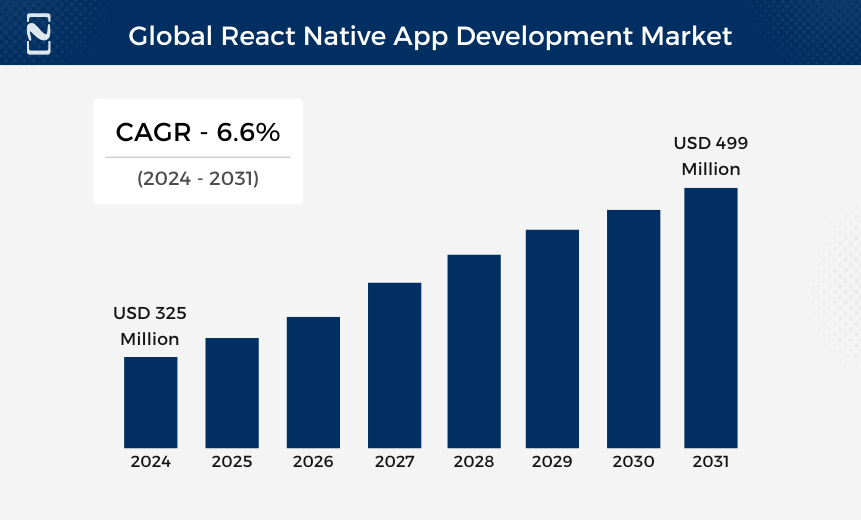
More and more businesses are using React Native to create a mobile app. This helps them save 40-50% on development costs compared to older methods. In the United States, about 2,979,341 websites are using React.
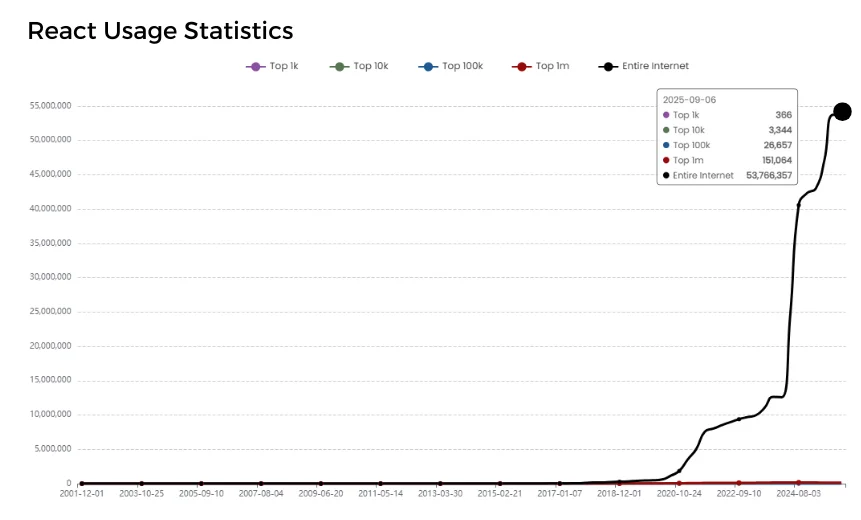
According to research by Statista, 38% of software engineers use React Native. Out of the top 500 apps in the United States, approximately 14.85% are developed using React Native.
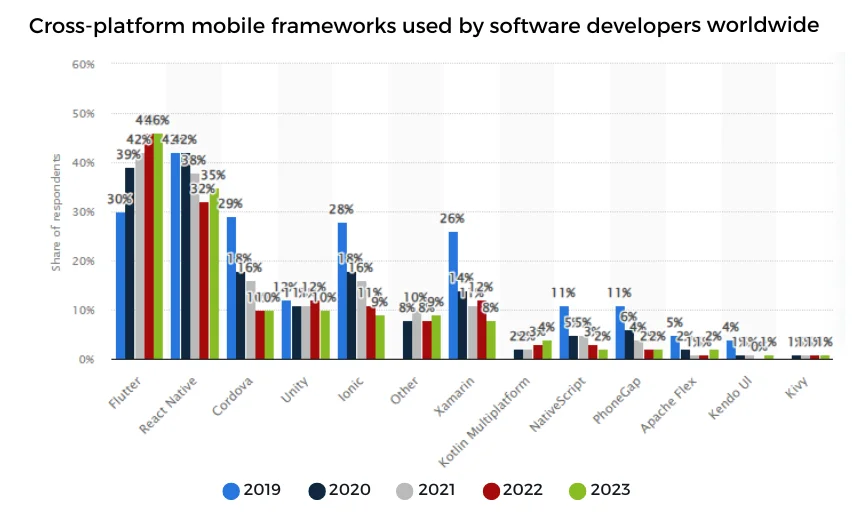
Benefits of React Native for Mobile App Development
If you are considering developing a mobile application, React Native is one of the most popular tools for developers. It is a framework that allows you to make apps for iOS and Android with one code.
Let’s take a look at the benefits of app development using React Native:
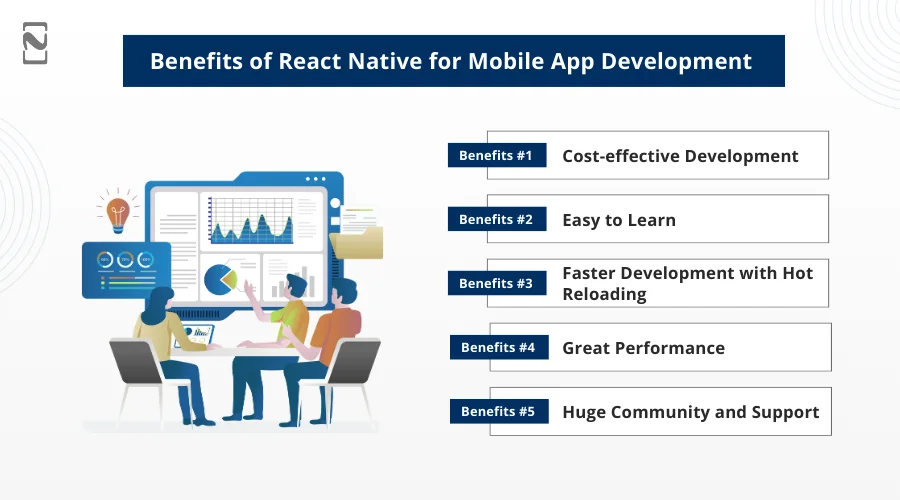
► Cost-Effective Development
One of the biggest reasons to choose React Native is that it saves both time and money. Traditionally, if you wanted an app for both iOS and Android, you would need to write separate code for each platform. It means double the time, work, and cost.
But with React Native, you only need to write the code once, and it runs on both platforms. This minimizes the need for a huge react native for mobile app development cost and time, and makes it best for startups and businesses on a budget.
► Easy To Learn
If you are already familiar with JavaScript, learning React Native is quite simple. Developers leverage their knowledge of web development and quickly jump into react native.
The framework also uses a component-based approach, which makes the code very easy to handle and more reusable. It can make the learning curve much smoother compared to other mobile app development frameworks.
► Faster Development With Hot Reloading
React Native provides a feature called hot reloading. This means that as developers make changes to the code, they can immediately see the updates in the react native mobile app. This does not require rebuilding everything from scratch.
It speeds up the process of testing and tweaking the app, which fastens the React mobile development and makes it more efficient. If you are looking to launch your app quickly or need to make frequent updates, this is a huge advantage.
► Great Performance
React Native is not quite as fast as mobile apps for business developed using fully native code, but its performance is still outstanding. It uses native components, which means it can access device features like the camera, GPS, and built-in sensors directly.
Additionally, the framework has optimizations that keep the app running seamlessly. As a result, the React Native app’s performance is quite identical to that of native apps. This is especially true when you optimize the code very well.
► Huge Community and Support
React Native is assisted by a large and active community. This is quite helpful because if you run into any issues or need assistance with development, there is a wealth of resources available online. For example, tutorials, forums, and pre-built libraries for react native for mobile apps.
Additionally, since it is maintained by Facebook and used by big brands like Instagram, it is continuously updated with new features and modifications. This way, mobile app developers can remain updated with the latest trends and technologies.
Real-World Examples of Apps Built With React Native
Here’s a handpicked list of the most popular mobile apps built with React Native. These examples show how businesses are using it to work smarter, create better user experiences, and grow their presence online.
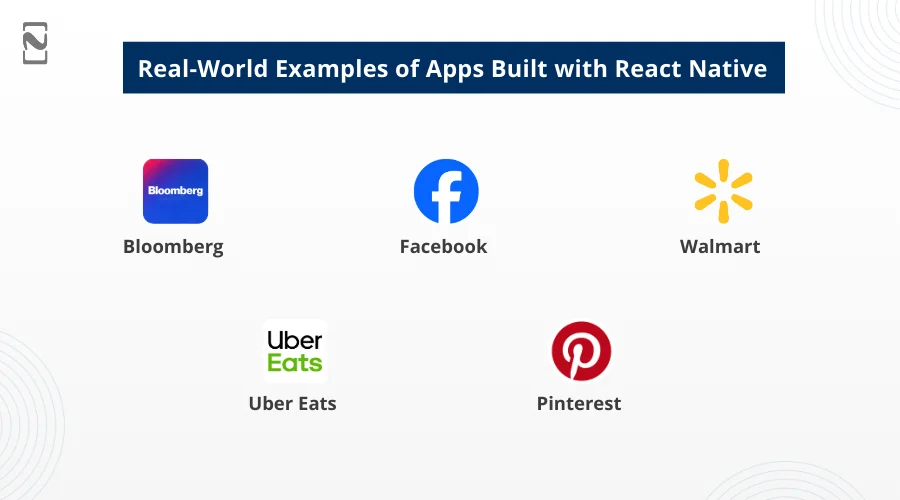
♦ Bloomberg
Bloomberg used React Native to develop their mobile app, where people read news and check the latest market updates. It helped them make the app work smoothly on both iPhone and Android phones without developing everything twice.
Facebook created React Native, so they also use it in their mobile application. One example is the ads section, where people can create and manage ads. It works well across both types of mobile phones.
♦ Walmart
Walmart did not want two different teams for iPhone and Android. So they used React Native to make one app that works on both. It saved time and made updates very easy.
♦ Uber Eats
Uber Eats has a part of the application just for restaurants. That section was built with React Native, so it is quicker for them to fix bugs or add new features.
Pinterest tested React Native to develop just for restaurants. That section was created with React Native, so it is faster for them to fix errors or add new features in the app.
When to Use React Native for Mobile App Development?
Let’s look at the best situations for using React Native to build mobile apps, helping businesses decide when it’s the right choice to save time and expand their reach.
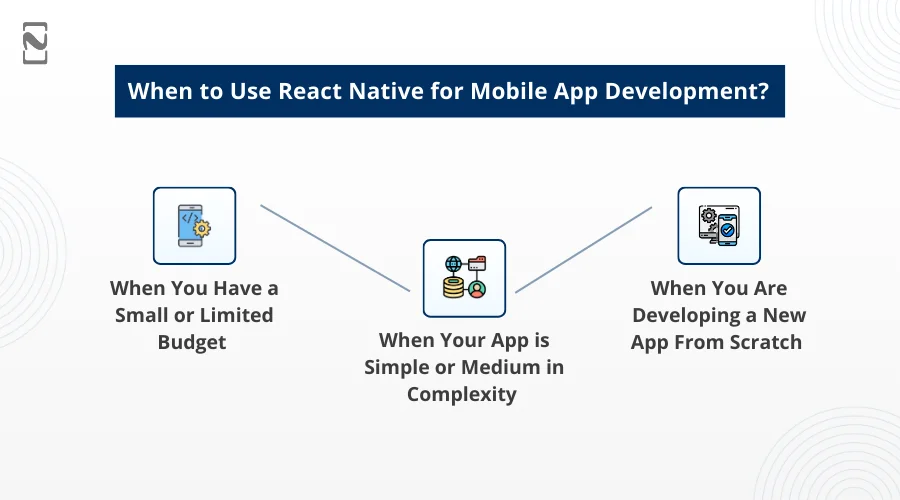
➤ When You Have a Small or Limited Budget
If you are working with a limited budget and can not afford to hire separate developers for Android and iOS, React Native is a great choice.
You only need to build your app once, and it will work on both platforms. It really saves your time and reduces mobile app development costs. It also helps you launch your app faster.
➤ When Your App is Simple or Medium in Complexity
React Native works really well if your mobile app development with React technology is not too complicated. It is perfect for react native mobile apps with basic or medium features.
You can reuse a lot of code, which saves time and effort. This makes react native for mobile app development faster and less expensive. It is best when you are not adding any advanced features.
➤ When You Are Developing a New App From Scratch
React Native is the best choice when you are starting from scratch with new React project ideas for apps. It’s flexible and easy to work with right from the beginning.
But if you’re trying to mix it into an app that already exists, it might cause issues or make the app harder to manage later.
React Native vs Flutter: A Full Comparison
Now that you know when to use react native for mobile app development, it is time to see which framework is better: Flutter vs React Native for your project.
Check out the comparison table below :
| Aspect | React Native | Flutter |
| What It Is | Framework by Facebook for mobile app development with react native with JavaScript and React | UI toolkit from Google for building apps with Dart |
| Programming Language | JavaScript (or TypeScript) | Dart |
| Performance | Slightly slower due to the JavaScript bridge | Faster due to direct compilation to native code |
| UI & Design | Uses native components, so apps look platform-specific | Uses custom widgets, offering a consistent look across platforms |
| Learning Curve | Easier for JavaScript/React developers | Steeper due to Dart and new framework |
| Ecosystem & Libraries | Larger ecosystem with more third-party libraries | Growing ecosystem, but fewer libraries than React Native |
| Community & Support | Larger community with extensive resources | Growing community, strong support from Google |
| Popularity & Job Market | Highly popular with many job opportunities (e.g., Facebook, Instagram) | Gaining popularity, especially for high-performance apps |
Is React Native Good For Your Project?
Are you still not sure if React Native is the right fit for your project?
Well, let’s take a look at how it can help you out :
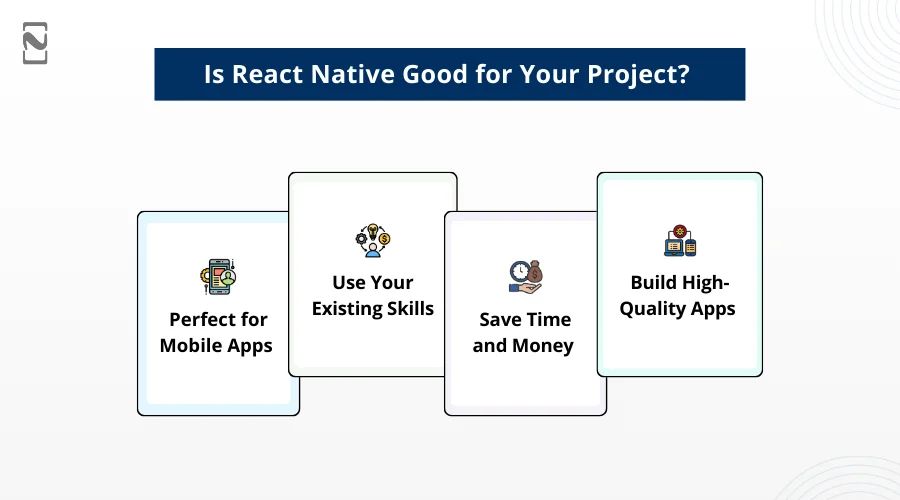
♦ Perfect For Mobile Apps
React Native allows you to create smooth, interactive mobile apps that deliver a top-notch experience on both iOS and Android. While React Native focuses on mobile, React DOM is designed for web apps, with each framework tailored to its platform’s needs.
♦ Use Your Existing Skills
Since React Native is based on JavaScript, your developers would not need much time to pick it up. And since it is open-source, there is a large community of mobile app developers with the required skills for support.
♦ Save Time and Money
If you are creating a mobile app for both iOS and Android, React Native can reduce your code by about 95%, saving you tons of time and money. There are also plenty of open-source libraries and pre-built components to speed up your react native for mobile app development.
♦ Build High-Quality Apps
React Native ensures a fast, responsive, and slick user interface. It is cheaper and faster to develop compared to native apps. Also, you do not have to sacrifice quality or functionality in react native for app development.
Why Choose Nimble AppGenie for Developing Apps in React Native?
When it comes to React Native app development services, Nimble AppGenie stands out for its strong focus on quality, delivery time, and business impact. We do not just create mobile apps. We develop real mobile solutions that solve problems and bring your ideas to life.
We understand that the cost to hire React Native app developers can be a major concern for startups and growing businesses. That’s why we offer flexible engagement models to fit your budget, without compromising on quality or performance.
From startups with limited budgets to enterprises that need scalable apps, we tailor each project to meet your objectives. No matter if you are starting from scratch or rebuilding an existing app, Nimble AppGenie delivers reliable React Native mobile development that assists you in launching faster and reducing costs.
Conclusion
React Native is the best choice for developing a fast and cost-effective app for both Android and iOS. It helps businesses launch a React Native cross-platform app quickly without requiring two separate apps.
But to get the best results, it is vital to plan carefully and know the mobile app development mistakes to avoid. With the right strategy and team, React Native can help you create a cost-effective, fully-functional app that performs well on every device.
FAQs

Niketan Sharma, CTO, Nimble AppGenie, is a tech enthusiast with more than a decade of experience in delivering high-value solutions that allow a brand to penetrate the market easily. With a strong hold on mobile app development, he is actively working to help businesses identify the potential of digital transformation by sharing insightful statistics, guides & blogs.
Table of Contents




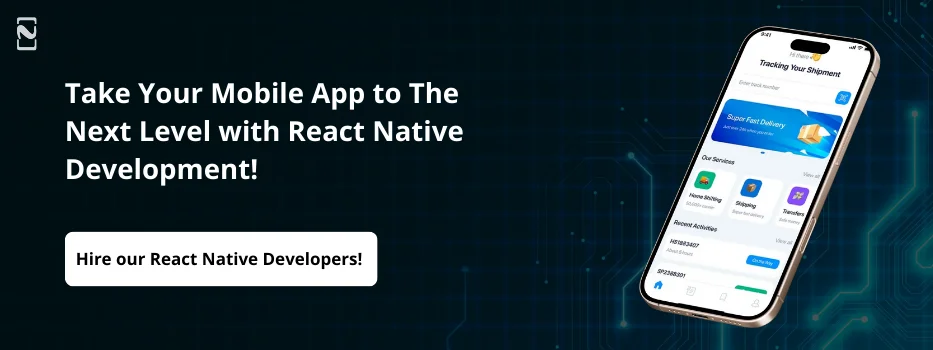
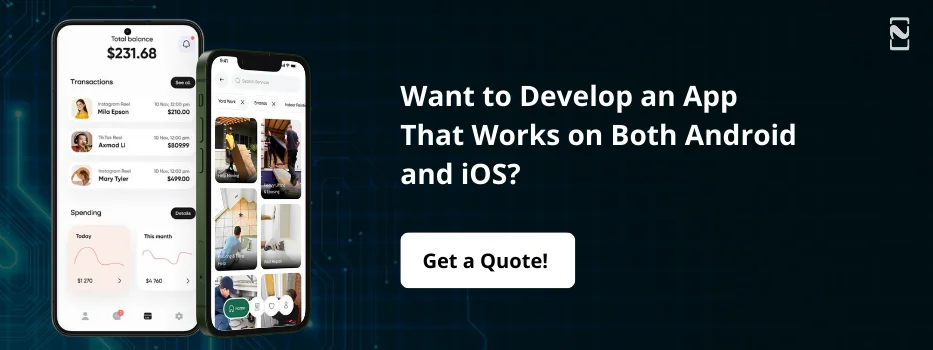
No Comments
Comments are closed.